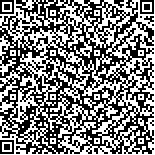| 引用本文: | 王利军,贺佳,郭燕,王利民,刘佳,王来刚,武喜红,程永政,张红利.高分1号冬小麦解译面积核算方法研究[J].中国农业资源与区划,2018,39(12):64~72 |
| |
|
| 摘要: |
| [目的]以高分1号(GF-1)融合2m卫星遥感影像为基础数据源,结合土地利用现状数据、高分多源遥感影像和地面样方等数据,对冬小麦分类提取中存在的面积误差问题进行研究和分析。[方法]文章以河南省永城市为研究区,在冬小麦提取结果聚类处理基础上,基于线性地物缓冲区数据,采用GIS空间运算实现线性地物面积扣除,接着分析了样方数据和土地利用现状数据再扣除零星地物面积比例上的差异,并采用样方零星地物平均扣除系数对全市各乡镇耕地与非耕地中冬小麦提取面积进行了相关统计和误差分析。[结果]永城市冬小麦最终解译面积1129万hm2,其中线性地物和零星地物扣除面积分别为6 61308hm2和3 87522hm2,占研究区冬小麦解译面积的586%和332%,与统计上报数据相比,其处理前后误差由1412%降低至441%,有效地提高冬小麦提取面积精度。[结论]误差来源分析与修正对冬小麦解译面积核算精度具有重要影响,该研究为县级区域尺度下冬小麦面积提取核算提供了思路和借鉴。 |
| 关键词: 遥感土地利用现状冬小麦线性地物零星地物 |
| DOI: |
| 分类号: |
| 基金项目:国家自然科学青年基金“利用遥感与高光谱技术进行土壤有机碳的制图与不确定性研究”(41601213); 国家重点研发计划子课题“作物生长监测诊断与精确栽培技术在黄淮海麦玉主产区的示范应用”(2016YFD0300609); 国防科工局高分辨率对地观测重大专项课题“河南高分农业遥感监测与评价技术研究”(09 Y30B03 9001 13/15); 河南省科研院所发展专项“农情信息遥感监测与服务云平台研究”(20188113); 河南省农业科学院自主创新专项基金年度任务书“基于多源遥感的河南省小麦面积提取研究”(2017ZC60) |
|
| CALCULATION METHOD OF WHEAT EXTRACTION AREA BASED ON GF-1 IMAGE |
|
Wang Lijun1, He Jia1, Guo Yan1, Wang Limin2, Liu Jia2, Wang Laigang1, Wu Xihong1, Cheng Yongzheng1, Zhang Hongli1
|
|
1.Institute of Agricultural Economic and Information, Henan Academy of Agricultural Sciences, Zhengzhou, Henan 450002, China;2.Institute of Agricultural Resources and Regional Planning, Chinese Academy of Agricultural Sciences, Beijing 100081, China
|
| Abstract: |
| Based on the GF 1 remote sensing image data, integrating the land use data, the field observation data and ZY 3, GF 2 remote sensing images, the wheat area error and reason in classification are researched and analyzed. Taking Yongcheng city, Henan province as a study area. Firstly, based on the winter wheat extraction area and its cluster result, the wheat area was deducted by using GIS spatial operation with the data of buffer of linear features and coefficient of sporadic objects. There were two different ways to deduct the coefficient of sporadic objects between land use data and ground samples, then the difference between them was analyzed. Finally, the statistics and error analysis in cultivated and non cultivated land were carried out on the extracted area of winter wheat with average deduction coefficient of ground samples. The results showed that the total classification winter wheat area was 1129.04 km2 in study area. The deduction linear objects and sporadic objects were 66.13km2 and 38.75km2, accounting for 5.86% and 3.32% of the total classification winter wheat area, respectively. In this study, the error decreased from 14.12% to 4.41% by reference of official data. It concluded that the error sources, linear and sporadic objects deduction played an important role in classification of winter wheat. This study can provide a way to enhance the accuracy of winter wheat classification on the county scale. |
| Key words: remote sensing land use data winter wheat linear feature sporadic objects |

